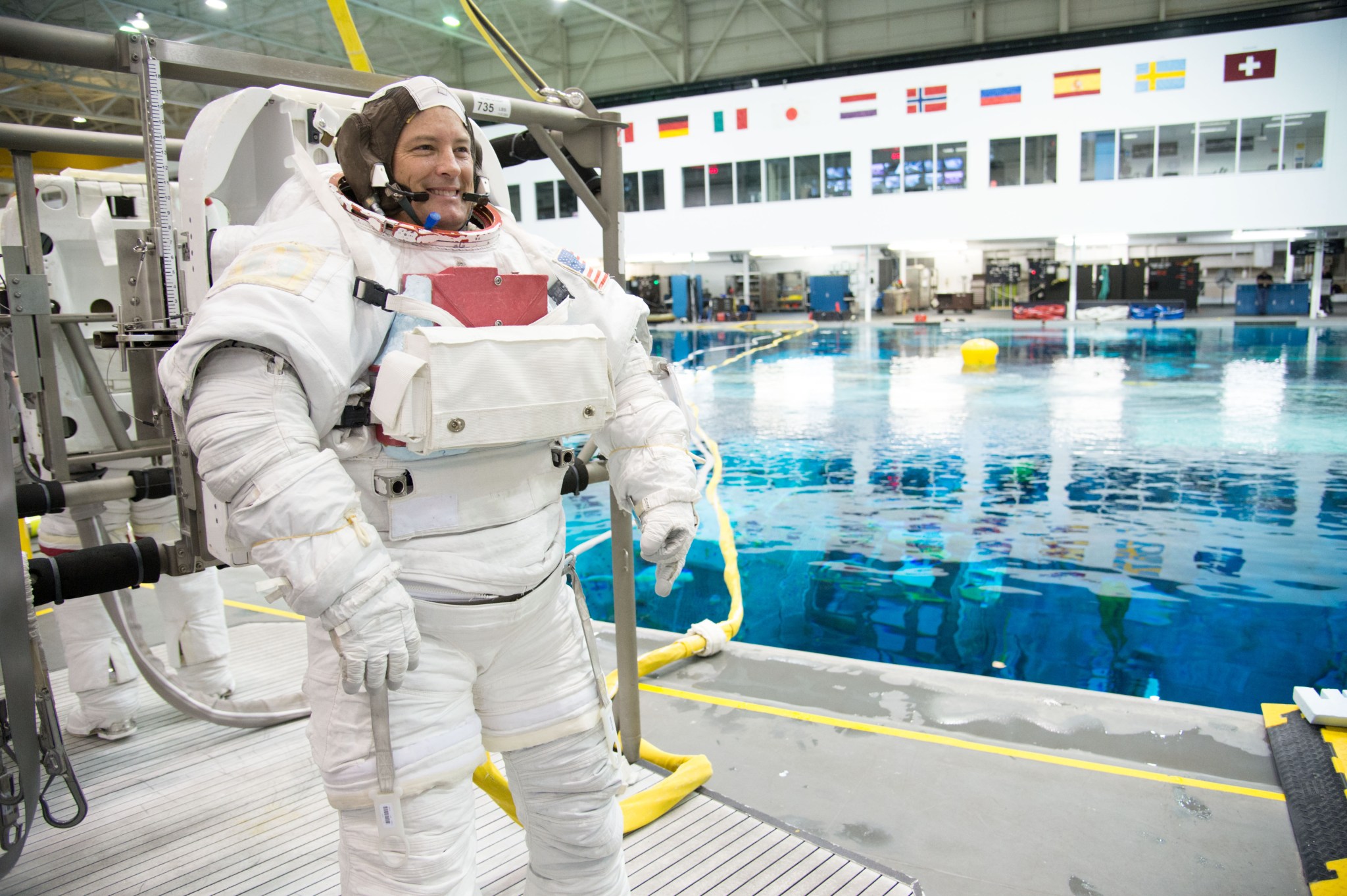NASA astronaut Scott Tingle will be available at 6 a.m. EST Friday, Dec. 1 for live satellite interviews one last time prior to his upcoming launch to the International Space Station Dec. 17, on what will be his first mission in space.
Originating from the Gagarin Cosmonaut Training Center in Star City, Russia, the interviews will air on NASA Television and the agency’s https://www.nasa.gov/live website. At 5:30 a.m., NASA TV will run a video feed of highlights from Tingle’s training.
To interview Tingle, media must contact Sarah Volkman at 281-483-9071 or sarah.e.volkman@nasa.gov no later than 3 p.m. on Wednesday, Nov. 29. Media participating in the interviews must tune to the NASA TV Media Channel. Satellite tuning information is available at:
Tingle is one of nine members of the 20th NASA astronaut class, selected in July 2009. His astronaut training has included scientific and technical briefings; intensive instruction in space station systems, spacewalks and robotics; physiological training; T-38 flight training; and water and wilderness survival training.
A U.S. Navy captain, Tingle grew up in Randolph, Massachusetts, and earned a Bachelor of Science degree in mechanical engineering from Southeastern Massachusetts University in Dartmouth, now the University of Massachusetts Dartmouth, and a Master of Science degree in mechanical engineering from Purdue University in West Lafayette, Indiana. Following graduate school, Tingle spent three years with the Aerospace Corp., in El Segundo, California, as a technical staff member in its Propulsion Department. He was commissioned as a U.S. Navy officer in 1991, and accumulated more than 4,500 flight hours in 51 types of aircraft, 750 carrier arrestments and 54 combat missions.
Tingle will arrive at the Baikonur Cosmodrome in Kazakhstan Monday, Dec. 4, for final prelaunch training. He and his crewmates, Anton Shkaplerov of the Russian space agency Roscosmos and Norishige Kanai of the Japan Aerospace Exploration Agency (JAXA), will launch on the Russian Soyuz MS-07 spacecraft at 2:20 a.m. EST Dec. 17. They are scheduled to return to Earth next spring.
The flight plan calls for an arrival at the station two days after launch, where they will join Expedition 54 Commander Alexander Misurkin of Roscosmos, and Flight Engineers Mark Vande Hei and Joe Acaba of NASA. The crew members will continue several hundred experiments in biology, biotechnology, physical science and Earth science currently underway and scheduled to take place aboard humanity’s only permanently occupied orbiting lab.
The experiments include Using Brachypodium distachyon to Investigate Monocot Plant Adaptation to Spaceflight (APEX-06), which investigates the growth of the common grass species Brachypodium distachyon in the microgravity environment of space. The grasses grow from seedlings aboard the station and are returned as frozen samples to Earth-based labs for detailed analysis and comparison with Earth based control groups. APEX-06 aims to compare the growth and gene-expression patterns of Brachypodium distachyon with those of the dicotyledonous model plant Arabidopsis thaliana, which has been extensively studied in space and whose behavior in microgravity is better understood.
Understanding how different plants grow in space can result in improved life support system design and resource planning for long-term space missions. It also provides a better understanding of grass and cereal crop stress response systems that can be applied in agriculture, habitat restoration, and natural resource management on Earth. Results from this experiment also advance comparative understanding of how plants use genetic and biomolecular systems to protect themselves under stressful conditions.
Follow Tingle on Twitter and Instagram at:
and
Learn more about the International Space Station and its crews at:
-end-
Stephanie Schierholz
Headquarters, Washington
202-358-1100
stephanie.schierholz@nasa.gov
Megan Sumner
Johnson Space Center, Houston
281-483-5111
megan.c.sumner@nasa.gov




























